George Keyt (Sri Lanka, 1901 - 1993) Untitled Signed and dated '74 lower left Oil on canvas 98 x 69cm (38 9/16 x 27 3/16in). Fußnoten Provenance: Acquired directly from the artist; Private Collection, Sri Lanka; Private Collection, U.K. Keyt marries modern European practises with ancient South Asian fresco techniques found at Ajanta and Sirgirya. Despite his clear interest in western art principles, Keyt's subject matter was largely rooted in local tradition, depicting vernacular buildings and scenery, villagers, dancers, tradesmen and gods often drawn from Hindu and Buddhist mythology. Keyt's interest in Hindu iconography and Indian literature led to him having close links with the cultural life of India, where he lived for long and short periods from 1939 right up to the late 1970s. "The lyric painting of George Keyt is sensuous Indian poetry brought to canvas. Like earlier Indian painters of Rajasthan and the Punjab Hills, and M. F. Husain after him, Keyt takes as his primary theme woman as the focus of man's concern. He paints her in flat planes, with bounding lines and rich warmth of color. His idiom occasionally carries in it a hint of Picasso but is, once again, in direct line with the traditional styles of Central India, Mewar, and Basohli. But the originality of Keyt's inspiration is undoubted, and his work remains uniquely his own." (R. Bartholomew and S. S. Kapur, Husain, Abrams, New York, 1972, p. 27) By the early 1930s, the Cubism that would forever alter the character of his paintings began to emerge in his work. He broke away from academic naturalism and embraced modernism with bold colourful fervour. Upon seeing French art magazine Cahiers d'Art, most likely in the possession of Lionel Wendt it is probable that the 1932 and 1933 issues featuring Cezanne, Picasso and Braque were the impetus for his interest and later passion for modernism. On a purely superficial level this departure seems monumental in Keyt's oeuvre however Dalmia notes that his works were more culturally loaded than their technical execution alone. 'As he moved to its village not far away and lived and painted there in the splendour of isolation George was to draw upon the dignity and civilization of the people which was embedded in their own culture. He etched the figures in darkness and made them luminous. Their early eloquence and sensual presence matched only their articulation as formal entities.' (Y. Dalmia, Buddha to Krishna: Life and Times of George Keyt , Taylor and Francis, 2016, pp.66-67)
George Keyt (Sri Lanka, 1901 - 1993) Untitled Signed and dated '74 lower left Oil on canvas 98 x 69cm (38 9/16 x 27 3/16in). Fußnoten Provenance: Acquired directly from the artist; Private Collection, Sri Lanka; Private Collection, U.K. Keyt marries modern European practises with ancient South Asian fresco techniques found at Ajanta and Sirgirya. Despite his clear interest in western art principles, Keyt's subject matter was largely rooted in local tradition, depicting vernacular buildings and scenery, villagers, dancers, tradesmen and gods often drawn from Hindu and Buddhist mythology. Keyt's interest in Hindu iconography and Indian literature led to him having close links with the cultural life of India, where he lived for long and short periods from 1939 right up to the late 1970s. "The lyric painting of George Keyt is sensuous Indian poetry brought to canvas. Like earlier Indian painters of Rajasthan and the Punjab Hills, and M. F. Husain after him, Keyt takes as his primary theme woman as the focus of man's concern. He paints her in flat planes, with bounding lines and rich warmth of color. His idiom occasionally carries in it a hint of Picasso but is, once again, in direct line with the traditional styles of Central India, Mewar, and Basohli. But the originality of Keyt's inspiration is undoubted, and his work remains uniquely his own." (R. Bartholomew and S. S. Kapur, Husain, Abrams, New York, 1972, p. 27) By the early 1930s, the Cubism that would forever alter the character of his paintings began to emerge in his work. He broke away from academic naturalism and embraced modernism with bold colourful fervour. Upon seeing French art magazine Cahiers d'Art, most likely in the possession of Lionel Wendt it is probable that the 1932 and 1933 issues featuring Cezanne, Picasso and Braque were the impetus for his interest and later passion for modernism. On a purely superficial level this departure seems monumental in Keyt's oeuvre however Dalmia notes that his works were more culturally loaded than their technical execution alone. 'As he moved to its village not far away and lived and painted there in the splendour of isolation George was to draw upon the dignity and civilization of the people which was embedded in their own culture. He etched the figures in darkness and made them luminous. Their early eloquence and sensual presence matched only their articulation as formal entities.' (Y. Dalmia, Buddha to Krishna: Life and Times of George Keyt , Taylor and Francis, 2016, pp.66-67)

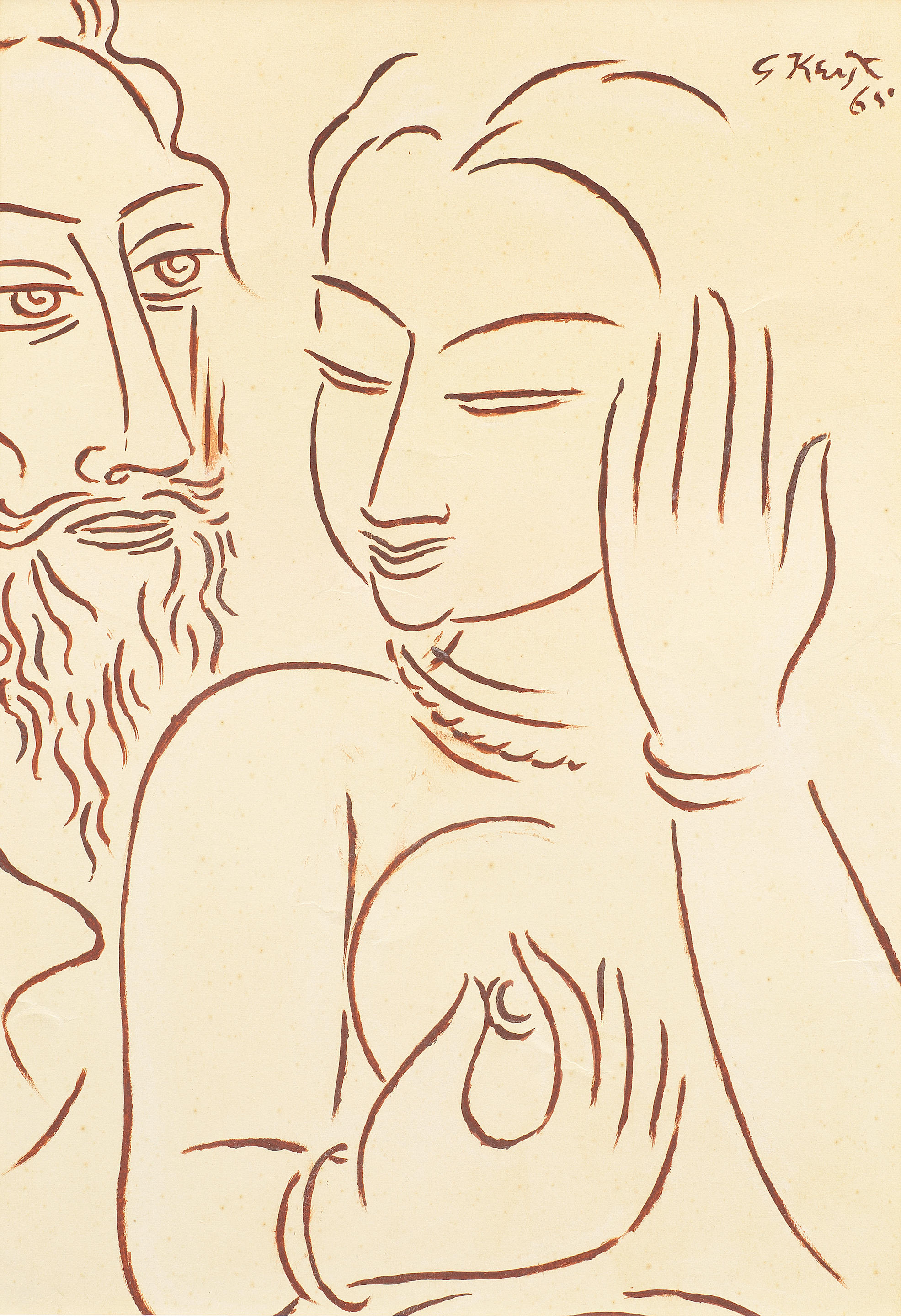
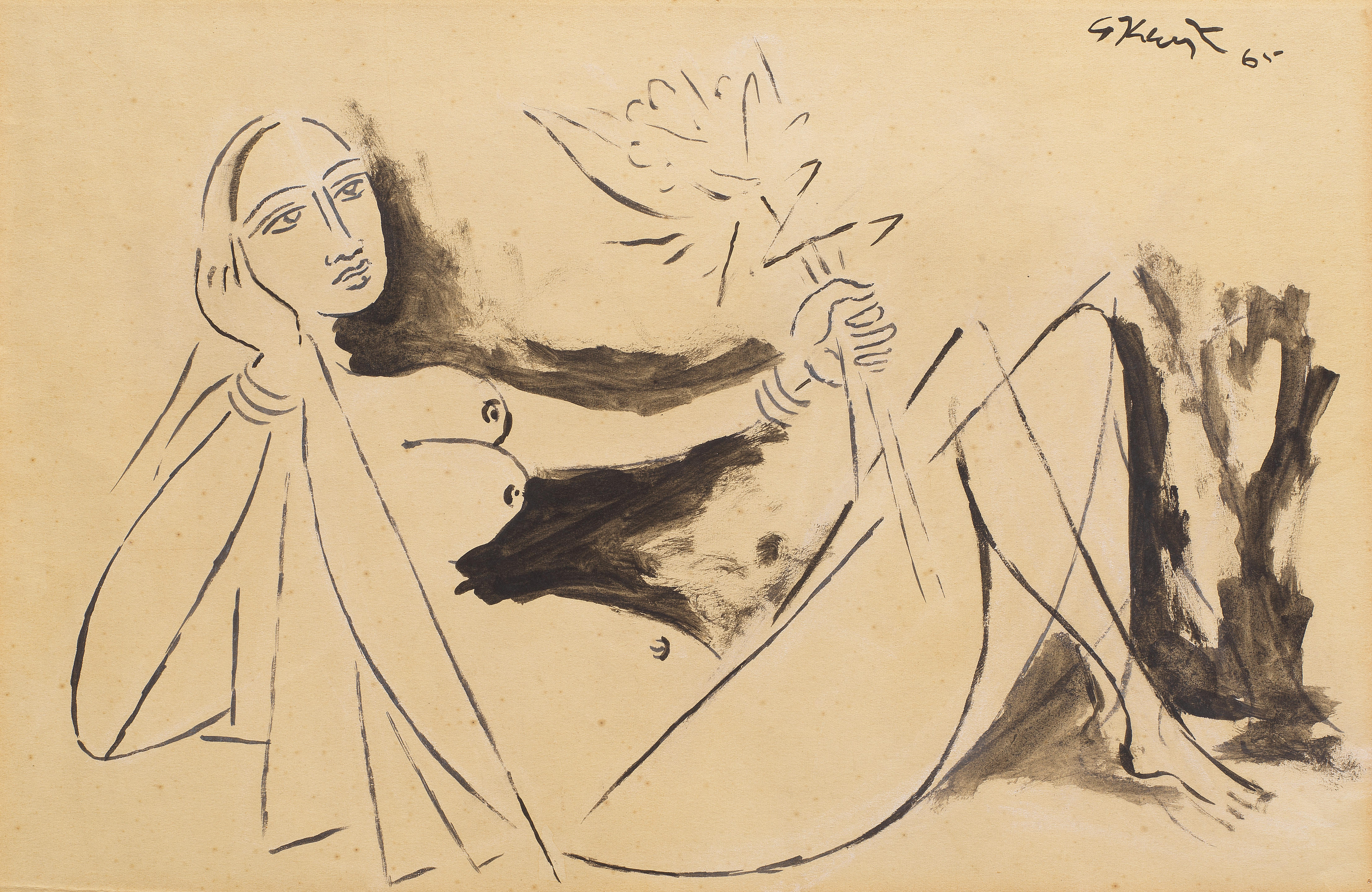
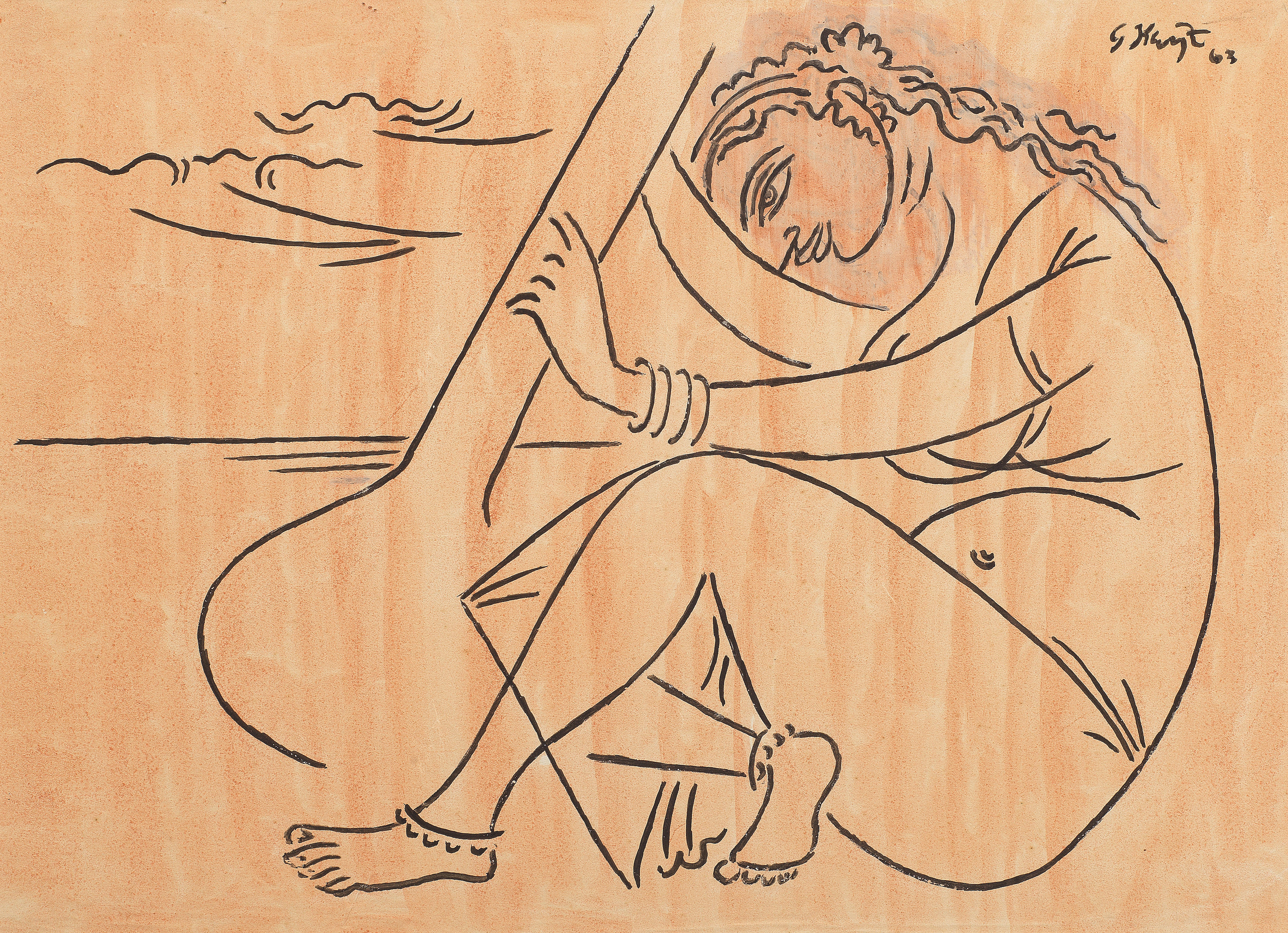
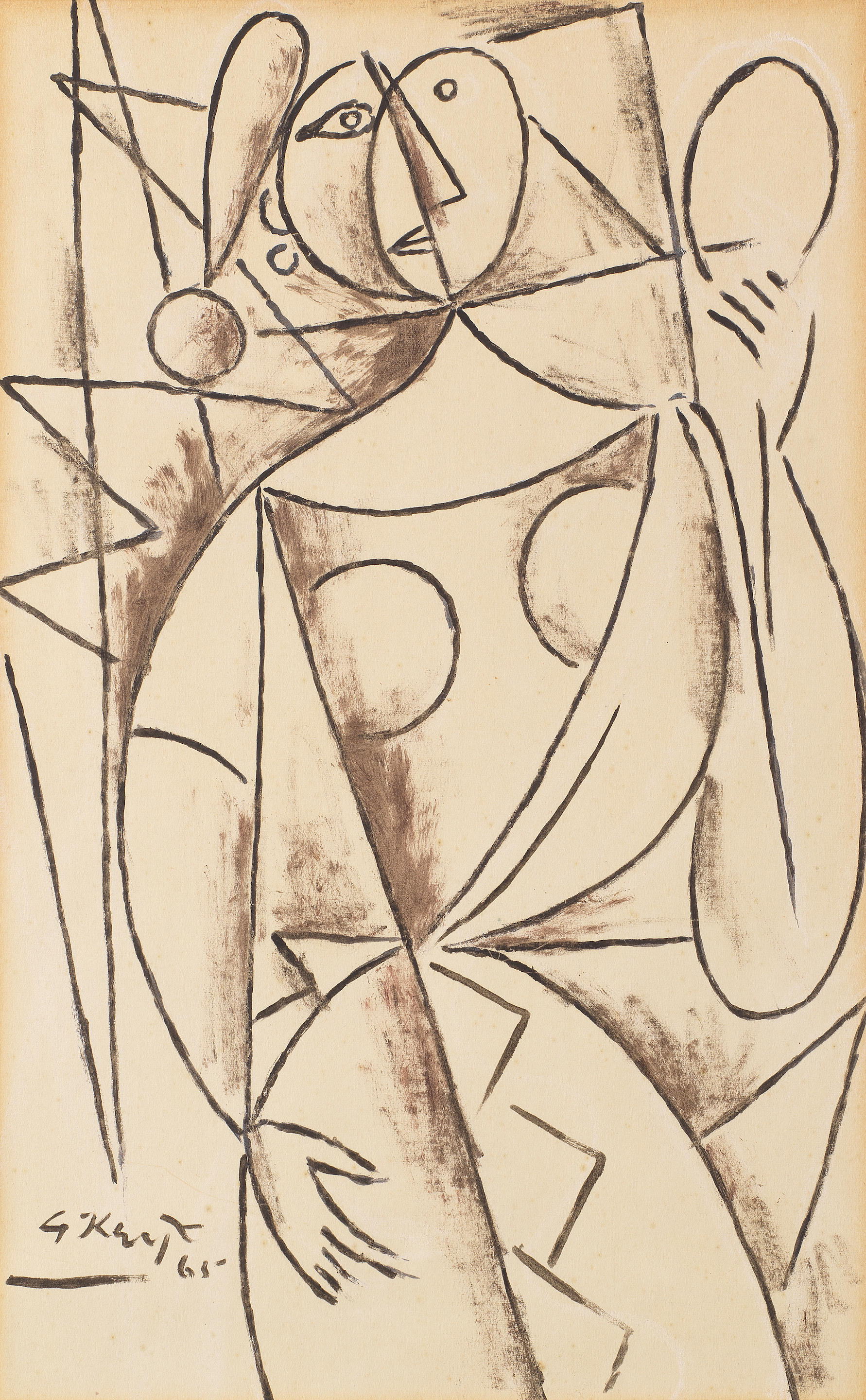
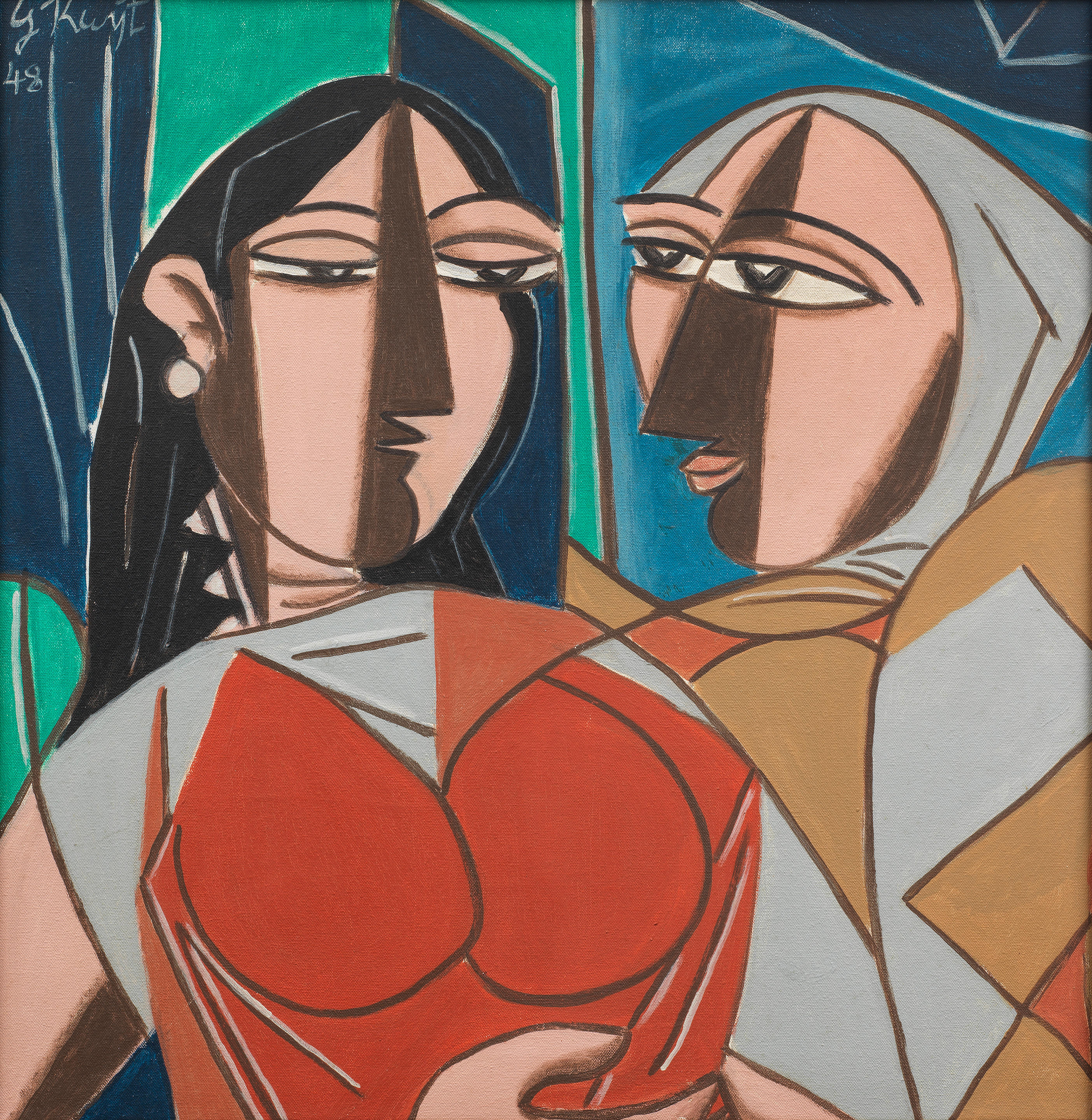




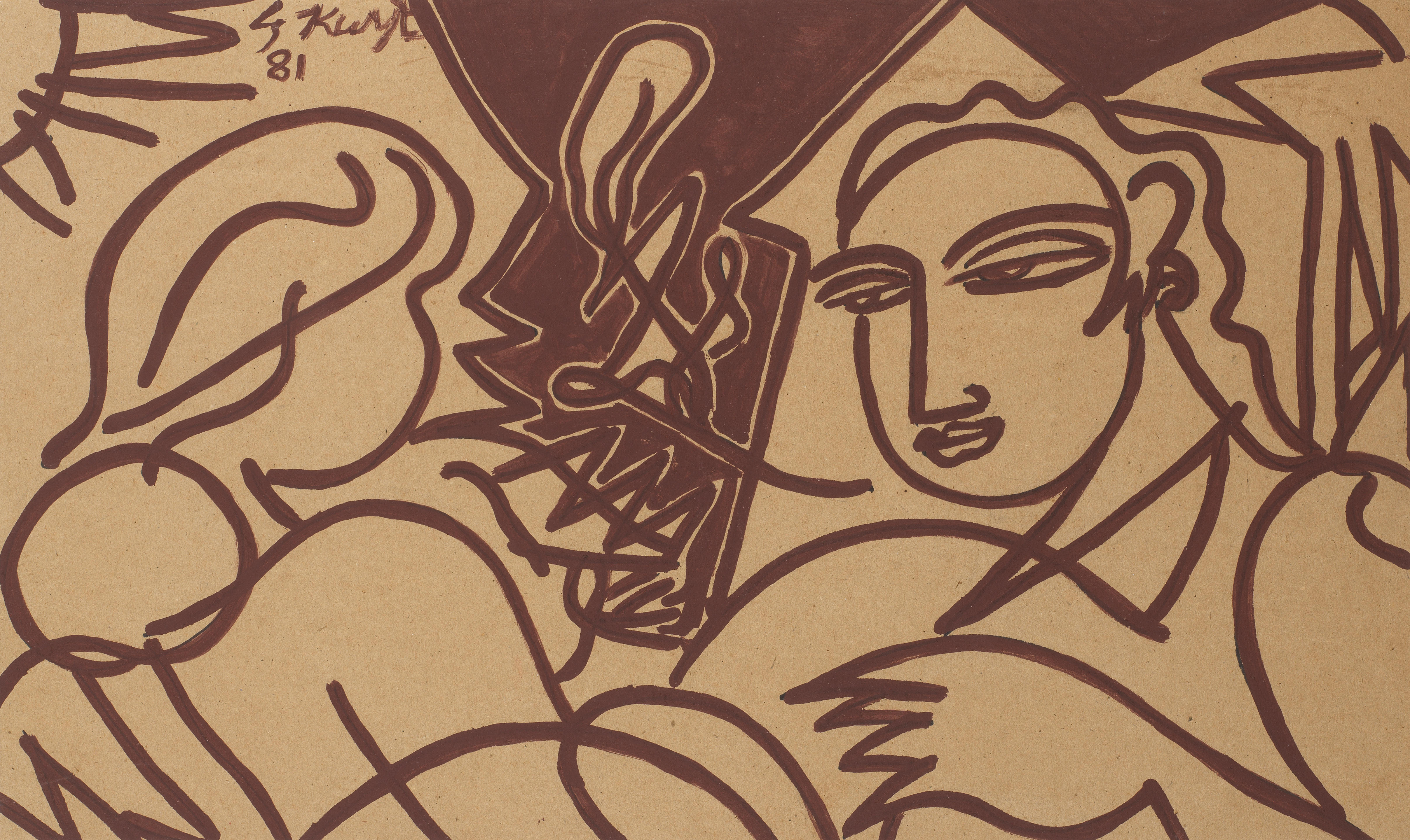
.jpg)



Testen Sie LotSearch und seine Premium-Features 7 Tage - ohne Kosten!
Lassen Sie sich automatisch über neue Objekte in kommenden Auktionen benachrichtigen.
Suchauftrag anlegen